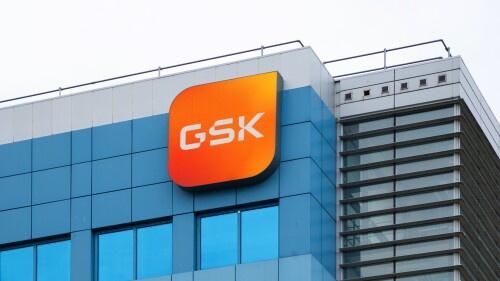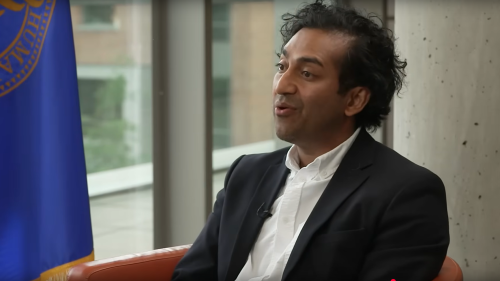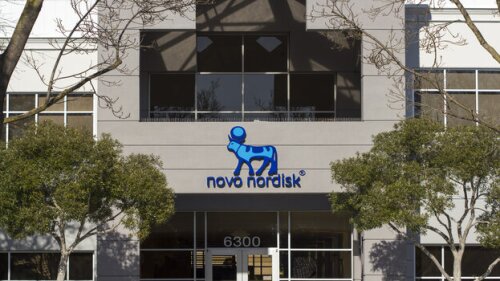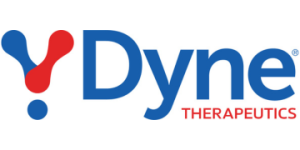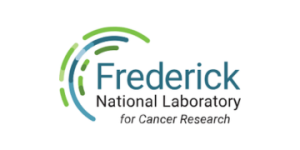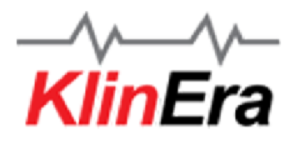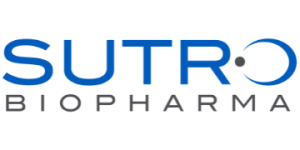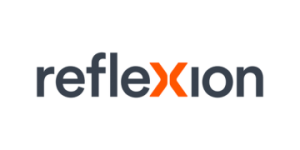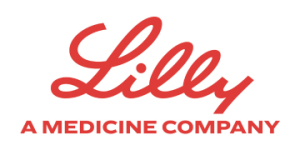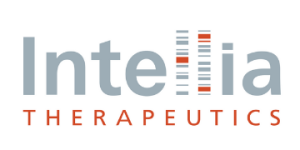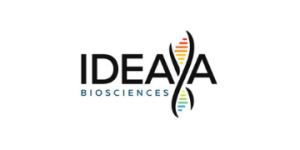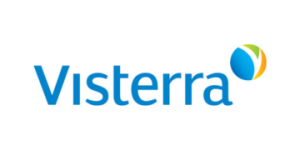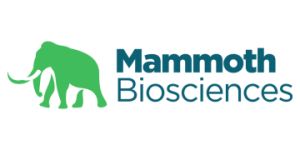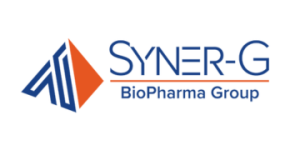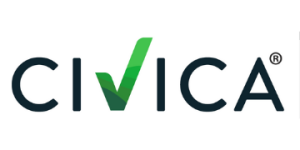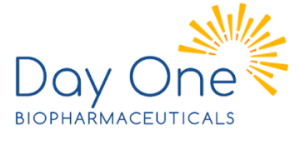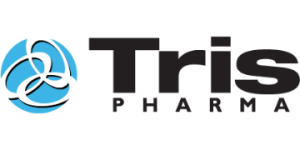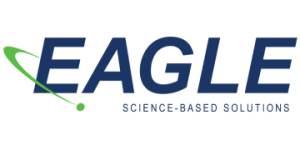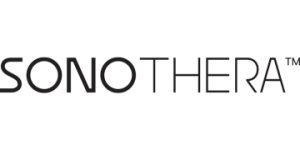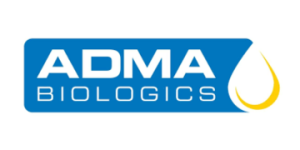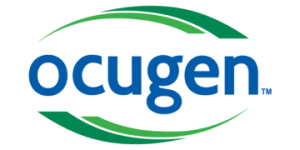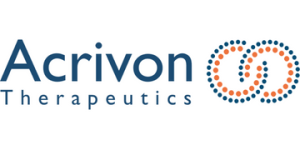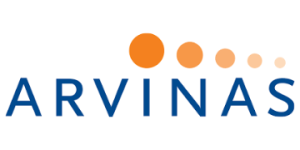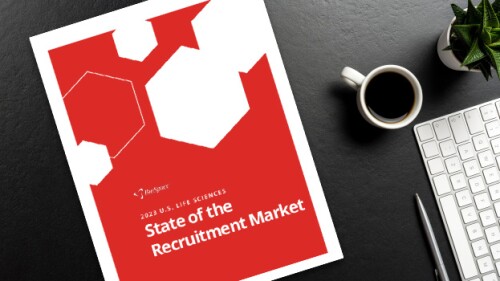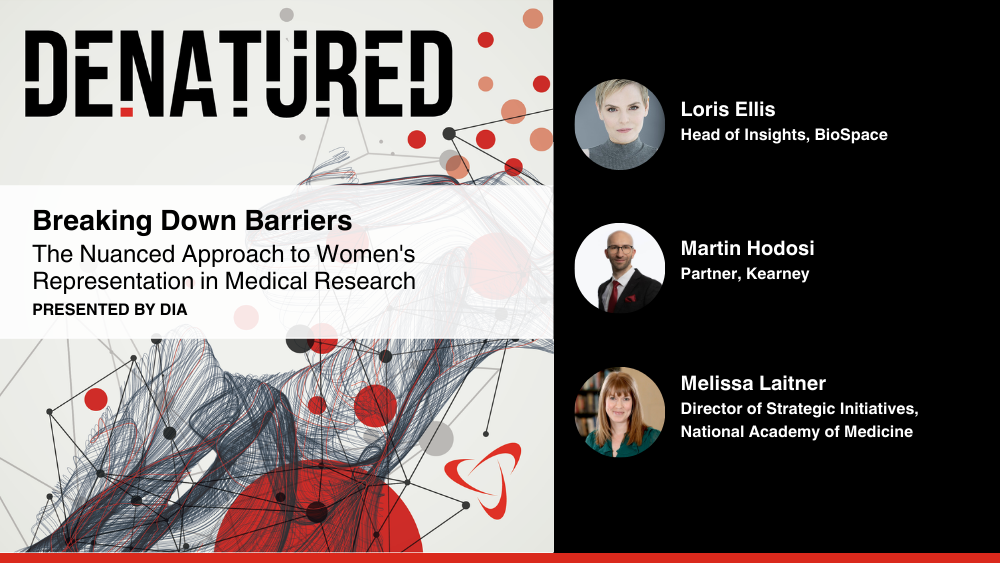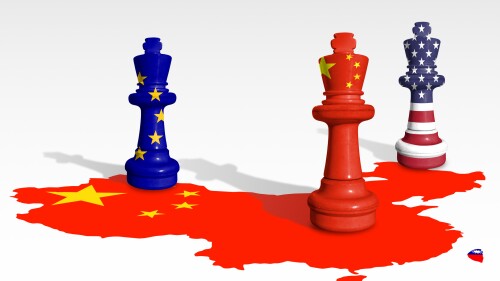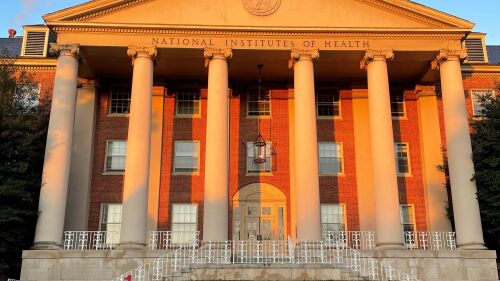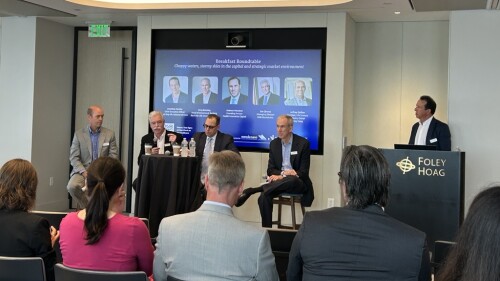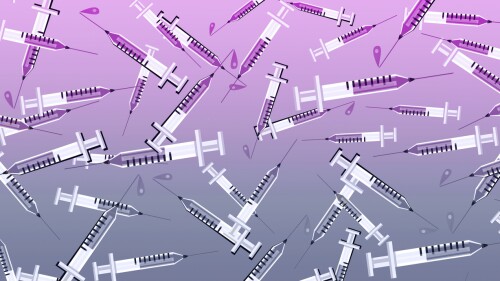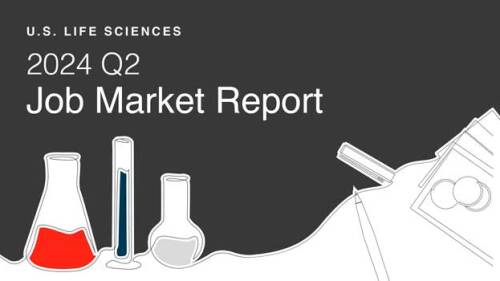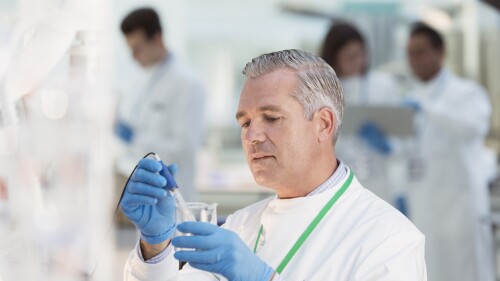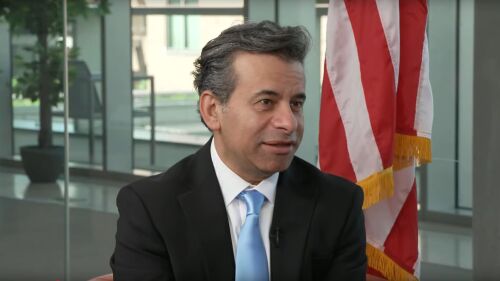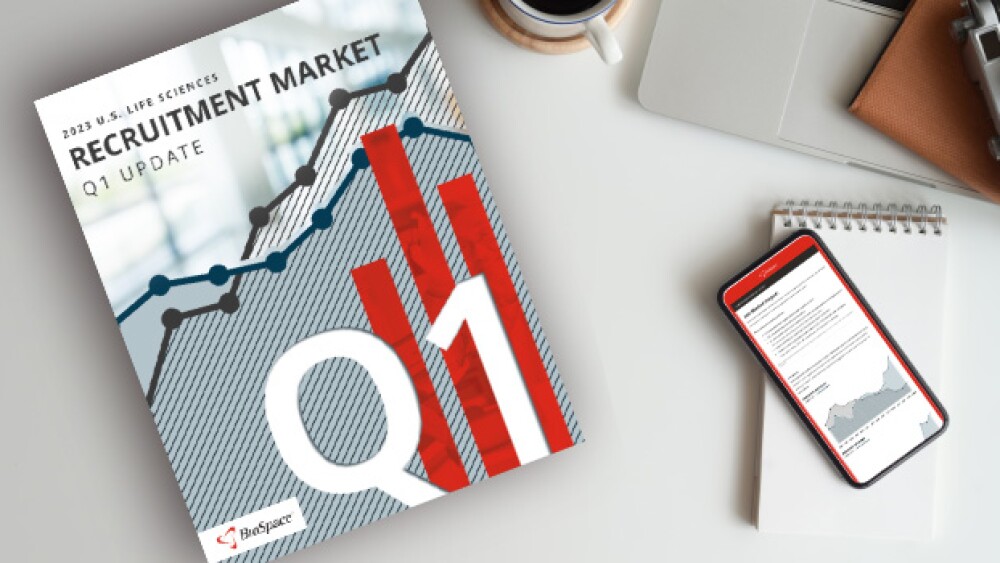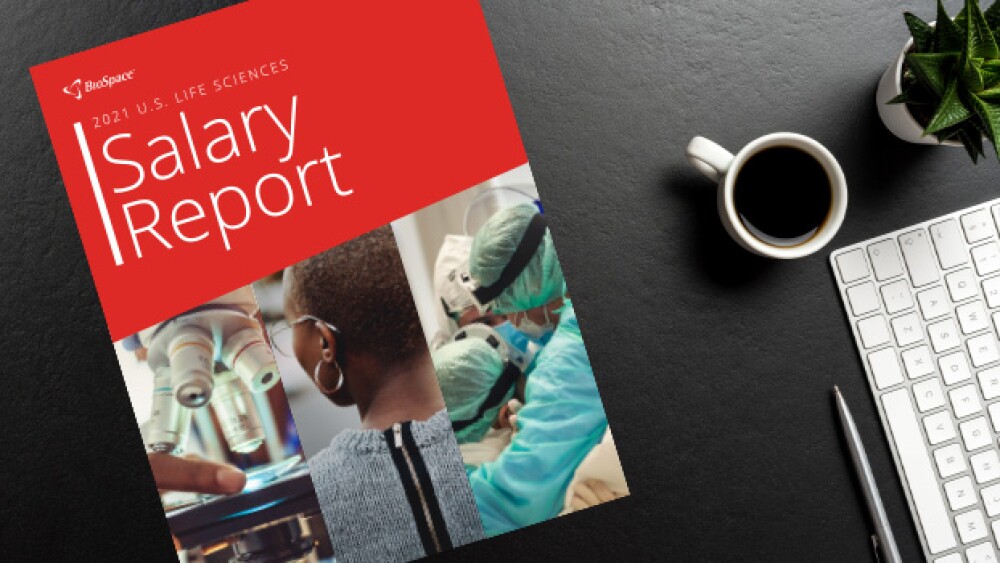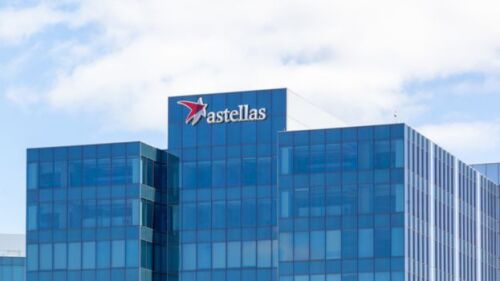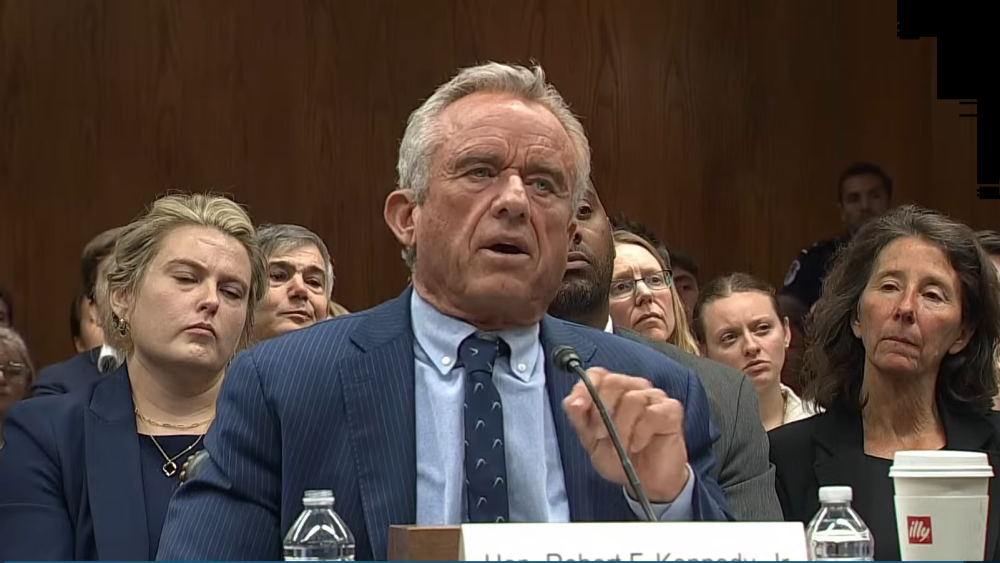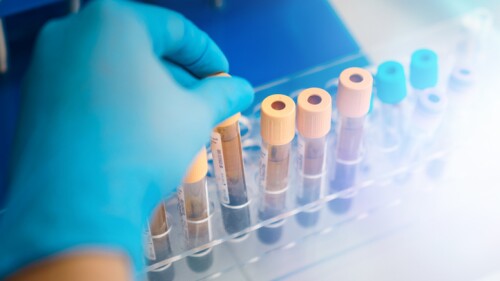CEO Emma Walmsley maintained that continued investment in the U.S. is a priority for the pharma to ensure its medicines for the country are supplied domestically.
Under the Inflation Reduction Act, medications with the same active ingredient will be treated as the same drug for price negotiation purposes—even if approved by the FDA under a separate application—disincentivizing companies from investing time and money in gaining approval for new formulations and indications.
The FDA’s dramatic summer continues to unfold as news broke late Tuesday evening that Vinay Prasad will depart the agency, where he had been the head of the Center for Biologics Evaluation and Research for less than three months.
Pascal Soriot’s comments came during AstraZeneca’s Q2 earnings call in regard to President Donald Trump’s newly announced European pharma tariffs. The company also announced estimate-beating earnings, with its cancer portfolio driving earnings despite clinical roadblocks.
CEO Rob Davis referred to the cost reduction program as a ‘reallocation’ rather than a cut, with the savings to be reinvested to support up to 20 new product launches.
In a surprise double announcement Tuesday, Novo reduced sales guidance by 5%—attributing the change to slowed growth of its semaglutide franchise in the U.S.—and named current international operations head Maziar Mike Doustdar as its new president and CEO.
FEATURED STORIES
The overturning of the FDA’s lab-developed tests rule is just the tip of the iceberg. With the loss of Chevron deference, power has shifted from federal agencies to the courts, with potential implications for everything from the FDA shortage list to CMS drug price negotiations.
Arguably the most notable of the FDA’s upcoming decisions is that regarding Gilead’s twice-yearly HIV prophylaxis lenacapavir.
Here’s how companies can ensure they’re in compliance with new requirements that go into effect in August.
The medium-sized biopharma is showing off new results from dordaviprone and Zepzelca, both of which were acquired through Jazz Pharmaceuticals’ dealmaking over the last five years.
A February executive order on pharmaceutical price transparency does nothing to change the incentives that keep costs opaque. But drug companies and other stakeholders would reap the benefits of such disclosures.
Nearly two years in with Zurzuvae, Biogen tackles an ‘all of the above market’ to find patients and battle stigma in postpartum depression.
FROM BIOSPACE INSIGHTS
BioSpace surveyed industry employers and professionals to understand what to expect from the recruitment market in 2022. What do professionals want? How difficult will it be to recruit new talent?
LATEST PODCASTS
In this episode presented by DIA, BioSpace’s head of insights Lori Ellis discusses the underrepresentation of women in clinical trials with Martin Hodosi, partner at Kearney and Melissa Laitner, director of strategic initiatives at the National Academy of Medicine.
A consumer-driven weight loss market could put pharma at greater risk if a recession hits; the continued turmoil at FDA and other HHS agencies magnifies the uncertainty facing the industry; Lilly files a lawsuit against a med spa selling its drugs; and more.
Biopharma leaders react to the forced resignation of CBER Head Peter Marks as RFK Jr.’s promised job cuts begin at the FDA; Novo Nordisk presents mixed results from oral semaglutide in cardiovascular disease; the EU’s Committee for Medicinal Products for Human Use declines to recommend Eli Lilly’s Alzheimer’s drug; and pharma R&D returns grew in 2024.
Job Trends
Massachusetts’ increased investment in the life sciences industry includes boosting its life sciences tax incentive program by $10 million annually, aiding job creation in the state.
Subscribe to Genepool
Subscribe to BioSpace’s flagship publication including top headlines, special editions and life sciences’ most important breaking news
SPECIAL EDITIONS
BioSpace did a deep dive into executive pay, examining the highest compensation packages, pay ratios and golden parachutes—what a CEO would get paid to leave.
A new generation of checkpoint inhibitors is emerging, with some showing more promise than others. From recent TIGIT failures to high-potential targets like VEGF, BioSpace explores what’s on the horizon in immuno-oncology.
Peter Marks, the venerable head of the FDA’s Center for Biologics Evaluation and Research, has been forced out. In this special edition of BioPharm Executive, BioSpace takes a deep dive into the instability of the HHS.
DEALS
-
After multiple rounds of layoffs that cut Kronos down to just 10 people, the small molecule biotech has accepted a buyout offer from Kevin Tang’s Concentra Biosciences.
-
Announcing first-quarter results, Biogen CEO Chris Viehbacher admitted that tariffs are “a new topic for us,” but said he does not expect major impacts—at least for 2025.
-
Many companies have foreshadowed deals to come during earnings calls in recent days. The return of M&A would be a welcome sign for the biopharma ecosystem, which has been battered by macro headwinds such as tariffs and the possibility of new drug pricing pressures.
-
Policy uncertainties are impacting biopharma dealmaking from continent to continent, with companies being asked to walk a tightrope on their relations with China.
-
The deal is a blast from the not-too-distant past, when special purpose acquisition companies were an easy way for companies to list on the public market with a bundle of cash to operate on.
WEIGHT LOSS
-
FDA Commissioner Marty Makary talks about his plans to revamp drug development and reduce ‘conflicts of interest’ between the agency and pharma industry; Roche and Regeneron jump on the U.S. manufacturing train as Trump’s tariffs loom; and Eli Lilly scores a big win for orforglipron while Novo Nordisk reveals it has applied for FDA approval of its oral semaglutide.
-
Novo Nordisk filed for approval of an oral, 25-mg formulation of its weight loss blockbuster “earlier this year,” according to a company spokesperson.
-
President Donald Trump in February threatened top pharma leaders, including Eli Lilly CEO David Ricks, with tariffs unless they reshore their manufacturing operations.
-
Eli Lilly’s shares shot up 11% pre-market on Thursday after orforglipron became the first small-molecule GLP-1 drug to ace a late-stage study in type 2 diabetes, eliciting significant reductions in body weight and improvements in glucose control.
-
Donald Trump takes biopharma on a tariff-themed rollercoaster ride; J&J kicks off the Q1 earnings season; experts express concern about the FDA’s future; Pfizer’s obesity setback could be Viking’s gain; and BioSpace reveals the highest paid pharma CEOs.
POLICY
-
The program will bring together experts from across the FDA for a team-based review, rather than having an application move across numerous offices within the agency before getting a yay or nay.
-
District Judge William Young, a nominee of Republican President Ronald Reagan, blasted the Trump administration’s NIH cuts as discriminatory and “bearing down on people of color because of their color.”
-
HHS Secretary Robert F. Kennedy Jr.’s actions in recent months have raised concerns that he is taking a heavy-handed and unilateral approach to vaccine policy in the U.S.
-
At a satellite kickoff event to the annual BIO meeting, investment bankers and VCs gave reasons for optimism amid a ‘volatile’ period for the industry.
-
Scientists and analysts express concern that the newly appointed ACIP members—which include known anti-vaxxers—could relitigate recommendations that have already been made. Many are imploring Sen. Bill Cassidy to step up.
While many describe California as having a tough life sciences market, there’s some optimism that employment opportunities will improve soon, according to California Life Sciences President and CEO Mike Guerra.
Looking for a quality control job? Check out these nine companies hiring life sciences professionals like you.
Companies will look at job candidates’ LinkedIn profiles, so make sure yours is strong, from the summary of your expertise and qualifications to testimonials from colleagues.
After more than 20 years at Eli Lilly, Leslie Sam moved into independent consulting. To prepare for the transition, she focused on becoming technically deep and earning industry recognition.
Employed and unemployed biotech and pharma professionals are thinking about job hunting in other fields amidst a challenging labor market.
When you don’t get the promotion you wanted, it’s important to assess your company and yourself so you can improve your odds in the future.
HOTBEDS
REPORTS
Economic turbulence has persisted into 2023 and the life science industry is certainly not immune. How are organizations juggling business needs, budgets, recruitment and retention?
Following a tumultuous start to 2023, layoffs have cooled off though recruiting activities have been significantly impacted by the economic environment.
The 2021 Salary Report is significant in more ways than one. This year, BioSpace analyzed salary data through two key lenses: the impact of the pandemic, and for the first time, race and ethnicity.
CANCER
-
Following Merus’ splash last month with a “best-in-disease profile” for its head and neck cancer bispecific, Bicara touted positive results for its monocolonal antibody, but analysts say Merus still has the upper hand.
-
Despite mixed results, analysts maintained faith in ivonescimab’s ability to cross over between Eastern and Western patient populations.
-
At the heart of the deal is an anti-Claudin18.2 antibody-drug conjugate being developed for solid tumors, including gastric cancer and pancreatic cancer.
-
Patritumab deruxtecan was unable to significantly improve overall survival in patients with locally advanced or metastatic non-small cell lung cancer with EGFR mutations.
-
iTeos expects to absorb nearly $25 million in one-time costs for severance and termination payments. The biotech had 173 full-time employees at the end of 2024.
NEUROSCIENCE
-
After a tense exchange, Senator Patty Murray (D-WA) told Kennedy that by implementing sweeping cuts to the HHS, he is “enacting his budget,” which “Congress has not passed.”
-
Analysts at BMO Capital Markets said in a weekend note that a non-invasive blood test could help boost uptake of Alzheimer’s disease therapies.
-
The FDA also changed its tune and is now planning to convene an advisory committee to discuss Biohaven’s application.
-
Azafaros will use the Series B haul to push lead asset nizubaglustat into late-stage studies for Niemann-Pick disease Type C and GM1/GM2 gangliosidoses later this year.
-
To more effectively treat neurodegenerative conditions, we first need diagnostic tools that lend a more complete picture of protein aggregates in the brain.
CELL AND GENE THERAPY
-
Lilly will use Rznomics’ proprietary ribozyme technology to develop RNA editing therapies for congenital hearing loss.
-
After warnings that the dragged-out process was putting the cell therapy company at risk of bankruptcy, bluebird bio now has a new deal to offer shareholders.
-
It’s another wild twist in the story of Galapagos, a company that has been around for more than 25 years but has yet to get a therapy approved.
-
The cell engineering company, co-founded by oncologist and writer Siddhartha Mukherjee, does not see a path forward for its pipeline of early-stage cell therapies for two different types of cancer.
-
CRISPR Therapeutics’ partner Vertex reported that more than 65 treatment centers have been activated for the gene therapy Casgevy. While Vertex handles the market, CRISPR has been focused on its clinical program.




